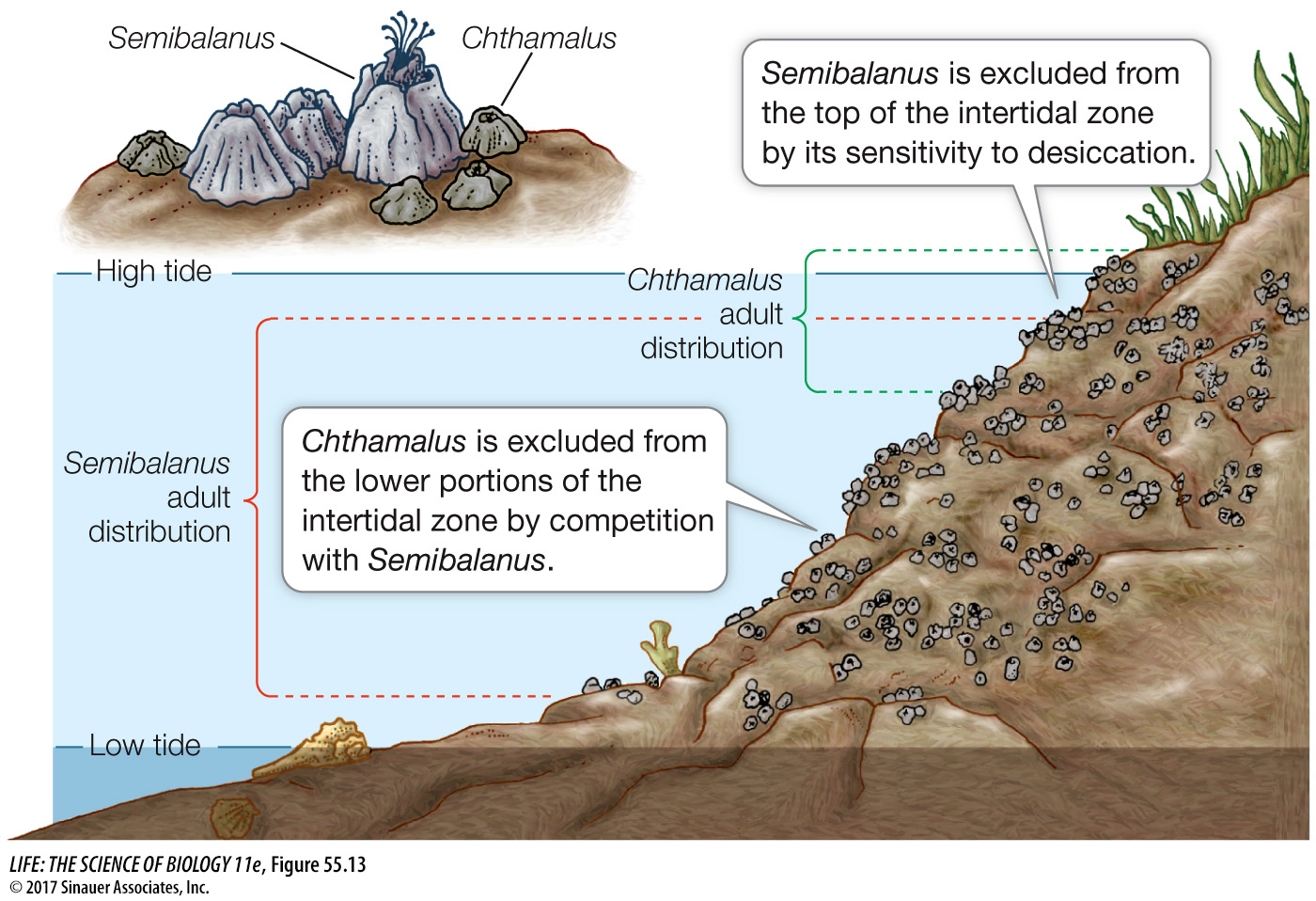Competition can affect species’ distributions
Competition can be important in determining where species are found. As you saw earlier, although species may be physiologically able to live under a wide range of conditions, competitors may restrict their use of resources to particular locations. An example of how competition can affect species distributions comes from the rocky intertidal zone of Scotland. Two species of barnacles, the acorn barnacle (Semibalanus balanoides) and Poll’s stellate barnacle (Chthamalus stellatus), compete for space on the rocky shorelines of the North Atlantic Ocean. The planktonic larvae of both species settle in the intertidal zone and metamorphose into sessile adults. The smaller stellate barnacles generally live at higher levels in the intertidal zone, where they face longer periods of exposure and desiccation (drying out) than do acorn barnacles, which live at lower levels. There is little overlap between the areas occupied by adults of the two species (Figure 55.13). What explains their distinct distributions in the intertidal zone?

1200
In a famous study conducted more than 50 years ago, Joseph Connell experimentally removed one or the other species of barnacle from its characteristic zone and observed the response of the remaining species. Stellate barnacle larvae normally settle in large numbers throughout much of the intertidal zone, including the lower levels where acorn barnacles are found (their fundamental niche), but they thrive at those lower levels only when acorn barnacles are not present (their realized niche). Connell found that the acorn barnacles grew so fast they smothered, crushed, or undercut the stellate barnacle juveniles. However, removing stellate barnacles from their spots higher in the intertidal zone did not lead to their replacement by acorn barnacles; the acorn barnacles are less tolerant of desiccation and failed to thrive there even when stellate barnacles were absent. The result of the competitive interaction between the two species is a distinctive pattern of intertidal zonation, with stellate barnacles restricted in their distribution by competition and acorn barnacles restricted in their distribution by their physiological limitations.